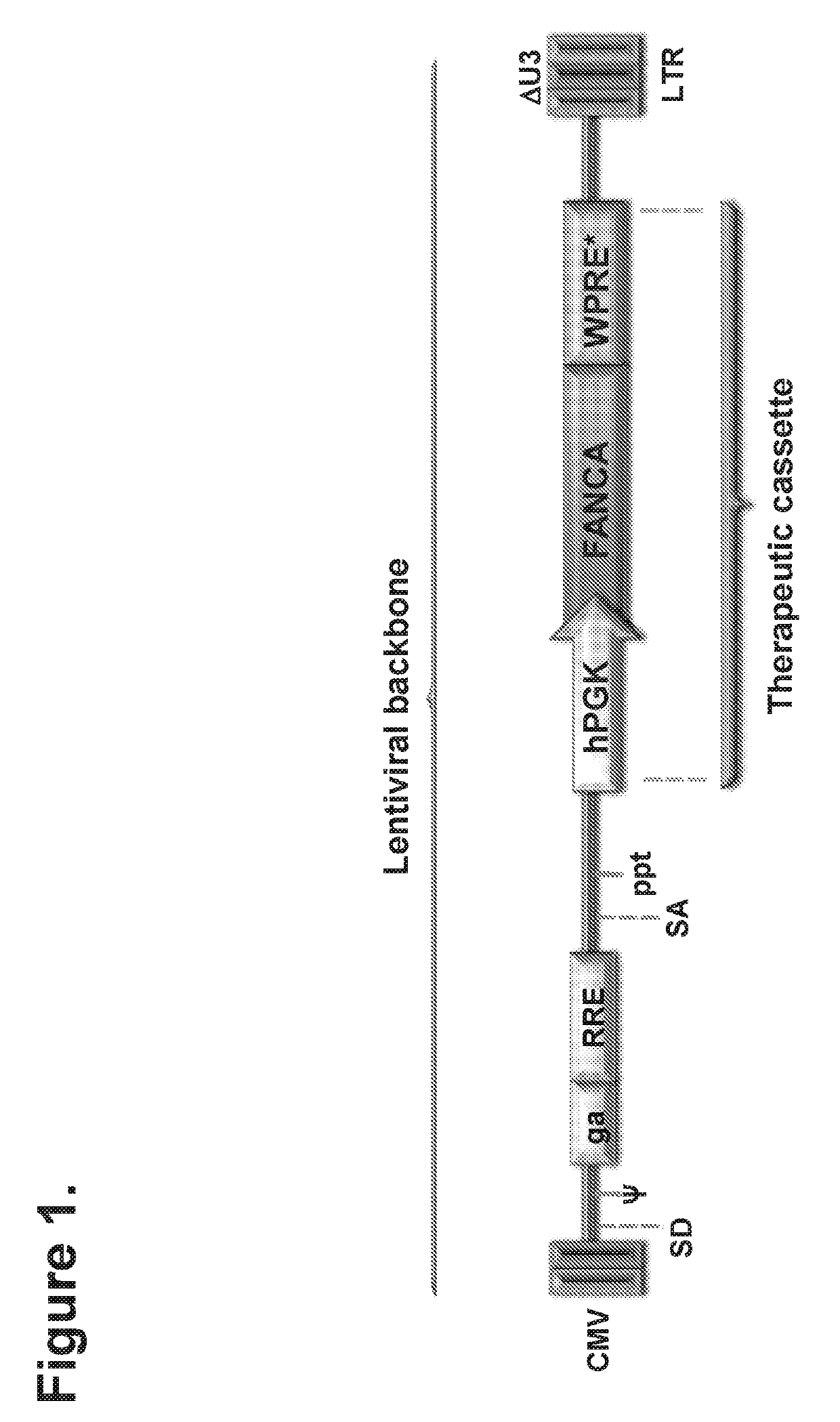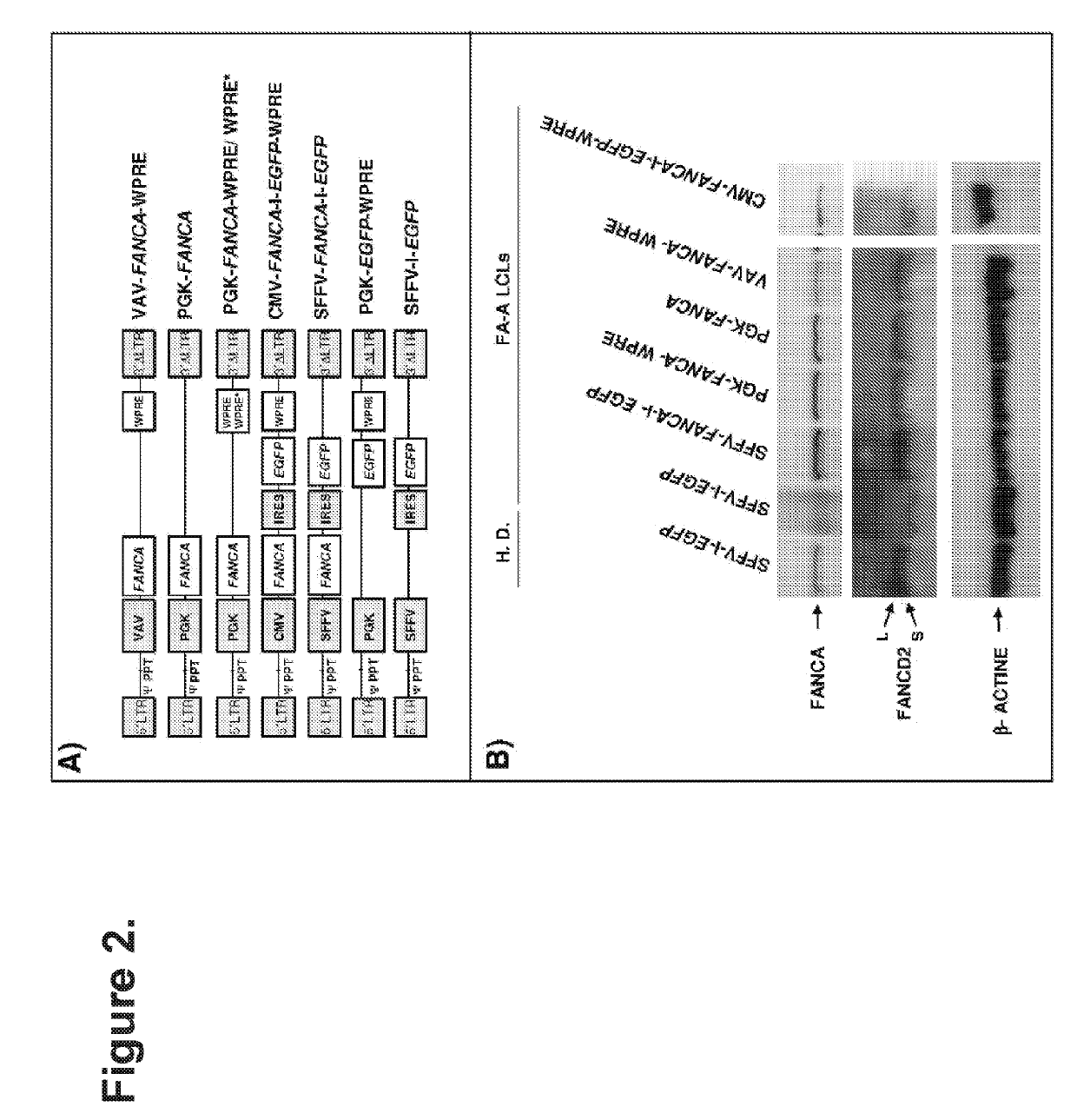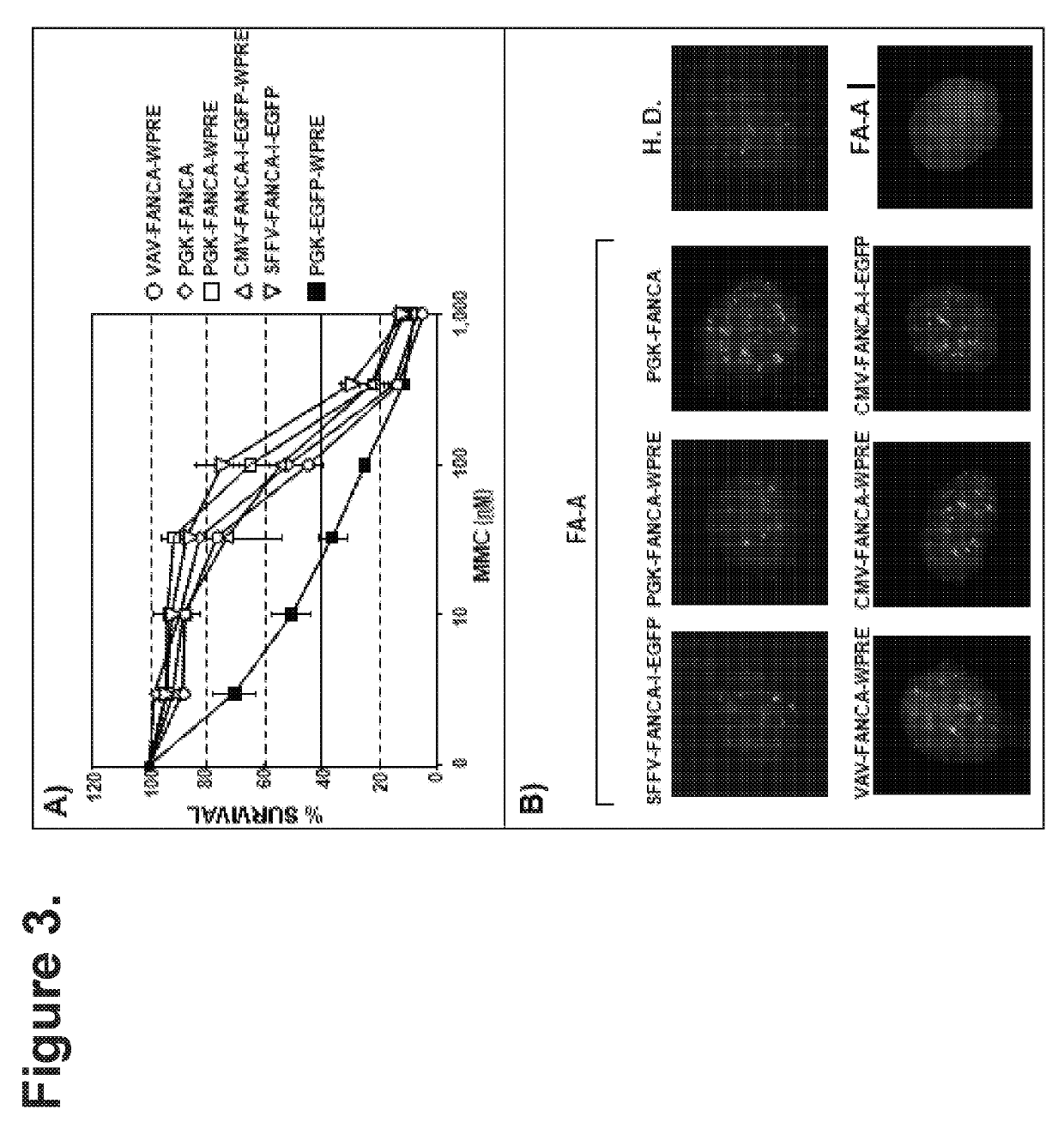Gene therapy for patients with fanconi anemia
a technology for fanconi anemia and gene therapy, applied in the field of gene transfer, can solve the problems of insufficient long-term treatment options, treatment is far from definitive management of patients with fa, and cannot be definitively treated, so as to increase the stability of mrna upon transcription and enhance the expression of fanca.
- Summary
- Abstract
- Description
- Claims
- Application Information
AI Technical Summary
Benefits of technology
Problems solved by technology
Method used
Image
Examples
example 1
FANCA Lentiviral Vectors
[0248]Because of the safer integration pattern of LVs compared to RVs (Gonzalez-Murillo et al., 2008; Modlich et al., 2009; Montini et al., 2006; Mitchell R S, Beitzel B F, Schroder A R et al. Plos Biol. 2004; 2:E234; Montini E et al. J Clin Invest. 2009; 119:964-975; Schroder A R et al. Cell. 2002; 110:521-529), it was an aim to develop LVs as therapeutic vectors to correct the phenotype of FA cells (Gonzalez-Murillo et al., 2009). Additionally, since recent studies have shown that LVs harboring potent internal promoters can also trans-activate neighboring genes (Modlich et al., 2009), LVs were considered for use in the clinic as a compromise between therapeutic efficacy and risks to trans-activate neighboring genes. The objective was, therefore, to define threshold levels of FANCA expression that could be therapeutic, in order to limit risks of gene trans-activation by the enhancer / promoter driving the expression of the therapeutic gene. The efficacy of the...
example 2
Mouse Model Studies
[0255]To evaluate the repopulating properties of BM samples from FA patients, either genetically corrected or not, several groups have transplanted BM cells from FA patients into immuno-deficient mice. Nevertheless, in no instance have significant engraftments been reported, most probably because of the reduced number of hematopoietic progenitors and HSCs present in the BM of these patients.
[0256]To evaluate the in vivo effects of the medicinal product, a mouse model for FA-A, which contains deletion in the Fanca gene, was used. In contrast to FA patients, these animals do not develop evident hematological defects. Nevertheless, their BM progenitor cells are highly sensitive to MMC (Rio et al., 2002), as it is also the case in FA patients. Therefore, to determine whether the FANCA LV (FIG. 4A) stably corrected the phenotype of the HSCs from FA-A mice in vivo, BM cells from FA-A mice were transduced with FANCA LV and then transplanted into irradiated FA-A recipient...
example 3
Transduction of Fresh Hematopoietic Progenitors from FA Patients with Lentiviral Vectors
[0260]Because transduction of FA cryopreserved hematopoietic stem cells (HSC) was previously shown to be less efficient compared to transduction of fresh grafts (Jacome et al., 2009), an effort to optimize the efficacy of the transduction of cryopreserved FA BM samples was undertaken. As shown in FIG. 7, conducting three transduction cycles significantly increased the transduction efficacy of FA CFCs compared to values obtained after a single transduction cycle (45.7±4.2% versus 13.5±5.1%, respectively). Samples were subjected to standard transductions consisting in a single transduction cycle (16 h) after 2 h of static preloading (white bars; 1×S) or improved transduction consisting in three transduction cycles (2 h+2 h+12 h) with the lentiviral vectors (grey bars; 3×D).
PUM
| Property | Measurement | Unit |
|---|---|---|
| Time | aaaaa | aaaaa |
| Fraction | aaaaa | aaaaa |
| Pharmaceutically acceptable | aaaaa | aaaaa |
Abstract
Description
Claims
Application Information
 Login to View More
Login to View More - R&D
- Intellectual Property
- Life Sciences
- Materials
- Tech Scout
- Unparalleled Data Quality
- Higher Quality Content
- 60% Fewer Hallucinations
Browse by: Latest US Patents, China's latest patents, Technical Efficacy Thesaurus, Application Domain, Technology Topic, Popular Technical Reports.
© 2025 PatSnap. All rights reserved.Legal|Privacy policy|Modern Slavery Act Transparency Statement|Sitemap|About US| Contact US: help@patsnap.com



